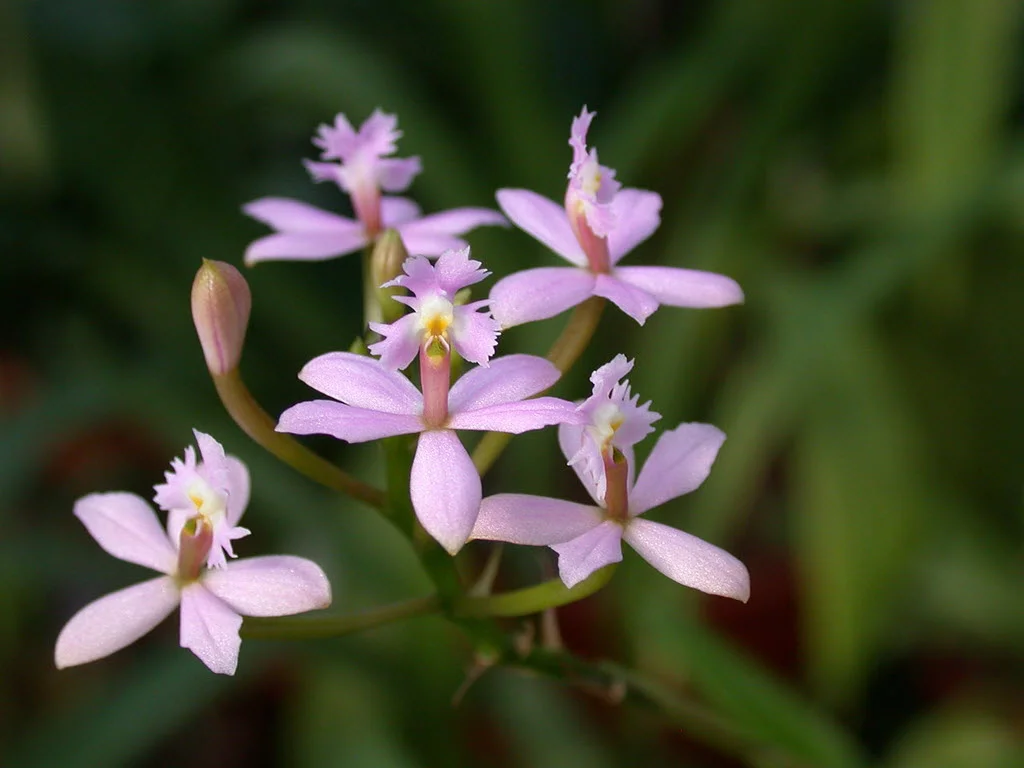Table of Contents
Pronunciation: an-GRAY-cum
Other Names: Angcm, Angrek, Comet Orchid
Introduction
The Angraecum is a fragrant star-shaped orchid with a long tail. The Angraecum sesquipedale, the most well-known in this species, is also called the Comet Orchid because of its appearance.
This long tail or spur is in actuality a nectar tube. At an amazing 30 centimeters, it is a surprisingly long one at that, so much so that when Charles Darwin received Angraecums from a British orchid grower in 1862, he postulated that there must be a moth with a tongue as long to pollinate it.
“Darwin wrote in a correspondence, ”I have just received such a Box full from Mr Bateman with the astounding Angraecum sesquipedalia [sic] with a nectary a foot long. Good Heavens what insect can suck it”. ”
He later added, "in Madagascar there must be moths with probosces capable of extension to a length of between ten and eleven inches [25.4–27.9cm]".
Twenty years later after the naturalist's death, the X. morganii praedicta was discovered. It was a moth with an amazingly long proboscis that was coiled in its head when not in use. It would take a century though before a connection between this moth and the Angraecums would be made wherein the same exact moth species was observed feeding and transferring pollen from one Angraecum flower to the next.
The Angraecum sesquipedale's nectar is at the very end of this long tail. Charles Darwin theorized that there must exist a pollinator possessing a proboscis as long as the plant's tail. The mystery pollinator turned out to be the Xanthopan moth.
Temperature
Angraecums do best in intermediate to high temperatures depending on whether they come from the lowlands or the mountains. Their ideal temperatures range from 60-80 °F (approx 15 to 28 Celsius) by day. By nighttime, the ideal temperature of their surroundings go down to 10-15 °F (approx 6-8 Celsius).
Remember that if they come from the lowlands, they'll want warm temperatures, and intermediate if they come from the mountains.
Light
Angraecum orchids being epiphytic means that they receive plenty of light in their natural surroundings. So, give your orchid maximum light but be sure to diffuse it to prevent leaf sunburn.
If your orchid comes from a mountainous habitat, it will need more shade than varieties coming from the lowlands.
Water and Humidity
Unlike most orchids, this species do not have pseudobulbs so you will have to pay attention in keeping them watered.
Angraecums have their growth season from late Spring to early Autumn. During this period, water them every 7 to 10 days. Then, spray them with water everyday.
Outside of this period, you can cut it back to spraying once every 10 to 14 days. Check out our Orchid Watering Guide for our 4 ways on how to check when your plant needs watering.
Feeding
Interestingly, you can opt to just feed your Angraecum from the months of April and September, when they are said to crave food. You can use a general purpose plant food. Give it a quarter or a third of the pack recommendation every third watering.
Potting
Being epiphytic, these orchids can be potted, placed in a basket, or mounted onto bark. If you are potting, use a well-draining epiphytic mix of bark, treefern, or osmunda. Repot every two to three years in Spring when growth restarts.
Watch A Video
See a plant in full bloom and with one bud. Brad has had his Angraecum for 2 years upon filming of the video.











